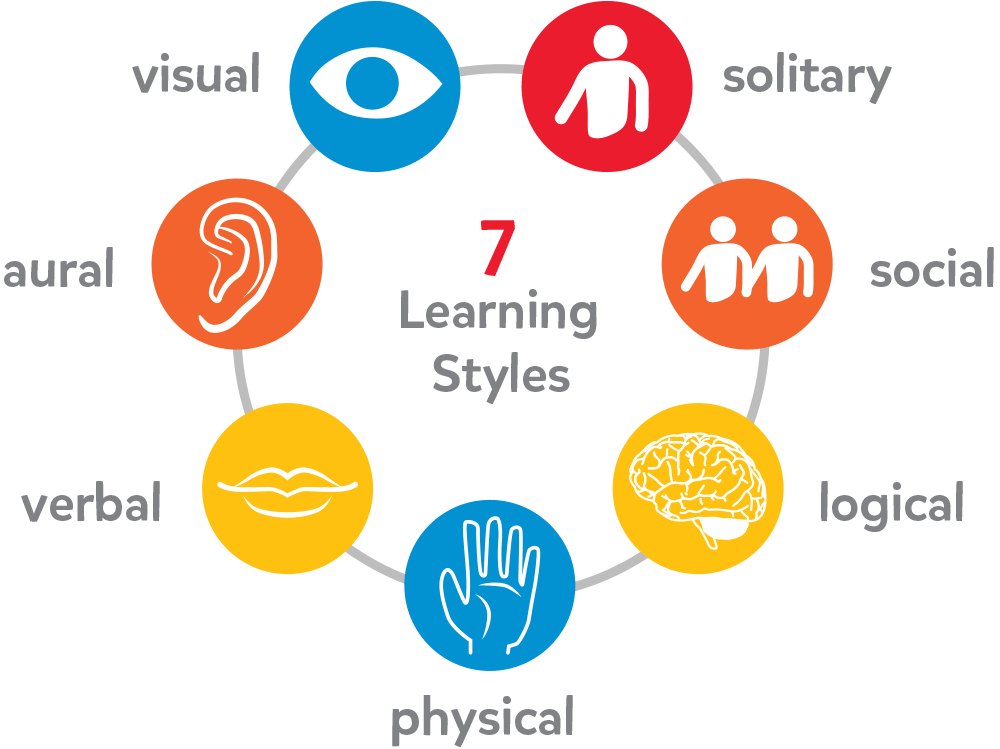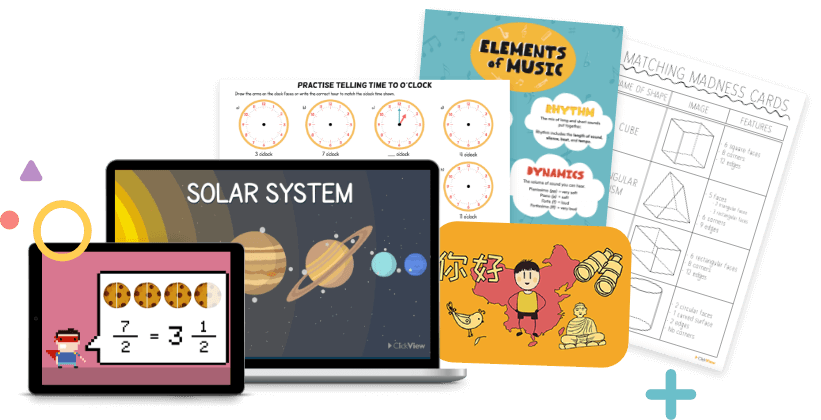16 Awesome classroom games for teaching how to read the time
Young students are full of energy and enthusiasm with that joyful willingness to participate in games and new experiences. Research has shown us that playfulness is strongly related to children’s cognitive development and wellbeing.
So, why not make learning experiences more interactive, meaningful, and memorable with a bit of fun?
ClickView’s guide to exciting games that teach the time:
- Counting games
- Individual educational games
- Games for pairs and small group learning
- Educational games for the whole class
- A school favourite to reward hard work
The importance of classroom games in pedagogy and learning
When you begin lesson planning, you think about how your students will take to learning activities.
You know who likes to do what, who takes their time, who always finishes first, who’s the boss, who the chatterboxes are, who’s the kid that can’t sit still…
A recent report on “what makes great pedagogy?” listed the following attributes of great pedagogy:
- Championing pupil voice
- Scaffolding student learning
- Building on pupil’s prior learning and experience
- Using a range of whole class, structured group work, and individual activity
- Focusing on developing higher-order thinking, metacognition, and communication
As a teacher, you’ll also take into consideration the learning styles (multiple intelligences) of your students:
- Visual (Spatial): students who prefer to draw, look at images, and spatial representations of information to learn.
- Aural (Auditory and Musical): students who prefer to be told information, listen for meaning, and to say things aloud to help them understand and memorise new things.
- Verbal (Linguistic): students who like to talk, read, and write to learn.
- Kinaesthetic (Physical): students who like to move, role-play, and be hands-on in their learning.
- Logical (Mathematical): students who like numbers, look for patterns, and organise information to understand it better.
- Interpersonal (Social): students who value social interaction, enjoy participating in group activities, and look for verbal and no-verbal information when they learn.
- Intrapersonal (Solitary): students who prefer independent, self-driven, and introspective (reflective) learning opportunities.

Finally, we look at the five types that are important to children’s cognitive growth:
- Physical play
- Playing with objects
- Symbolic play
- Pretence and dramatic play
- Games with rules
We can clearly see how classroom games have enormous potential to bring everything together.
Interactive resources to support learning
We’re also excited to announce our series of Miniclips to teach primary students to tell the time in this guide.
Beautifully animated, these clips will help you scaffold learning in a bright, colourful, and interactive manner. They’re short to keep short attention spans homed in on key learning outcomes.
Video: O’Clock on Digital Clocks | Telling Time:
Each feature comes with lesson plans and support materials so that you’re ready to start teaching about concepts of time and structuring learning effectively within minutes…not hours.
ClickView’s guide to exciting games that teach the time
- Counting games
- Individual educational games
- Games for pairs and small group learning
- Educational games for the whole class
- A school favourite to reward hard work
1. Counting games:
Rock paper scissors
Suitable for: lower primary
Rock, paper, scissors, 1, 2, 3! Make counting practice more fun by adding a competitive layer. This helps young learners memorise necessary time number sequences more effectively to help them read a clock-face with greater ease.
Rules:
- Display time-related sets of numbers (1-30, 30-60, multiples of 5, multiples of 10) on the Interactive White Board (IWB)
- Students pair up and play rock, paper, scissors on the teacher’s instruction
- The winner counts the number set forwards, and the loser counts the number set backwards
- Rotate students to challenge different classmates
Teacher tip: Create a worksheet to track wins and losses as students work towards stamps and stickers as rewards. This simple resource makes motivating your students effortless, and it’s cheap, too.
This game is ideal for kinaesthetic, verbal, visual, and interpersonal learners.
Buzz/beep/bop counting games
Suitable for: lower primary
Drilling number sequences can be entertaining by involving the whole class, setting (and breaking) class records, and rewarding everybody’s progress. This game works for skip counting and multiplication tables really well, so it readily fits in with learning time intervals.
Rules:
- The class stand in a circle and counts student-by-student around the circle to 60
- The students start replacing multiples of a number set by the teacher (e.g., multiples of 5, multiples of 10) with the word “buzz” (e.g., 1, 2, 3, 4, buzz, 6, 7, 8, 9, buzz for multiples of 5)
- If a student fails to say buzz at the correct number, everyone starts from the beginning again
- As their confidence and ability grows, increase the difficulty (e.g., add beep for multiples of 10: 1, 2, 3, 4, buzz, 6, 7, 8, 9, beep)
- Record their progress on a chart displayed clearly in the room, and when they hit specific goals (e.g., counting forwards and backwards, reaching bop stage for multiples of 2?)
- Give them small rewards to maintain motivation and maybe a class movie when they have met every objective.
This game is ideal for logical, verbal, and interpersonal learners.
2. Individual educational games:
Time bingo
Suitable for: lower and middle primary
Don’t discount tried-and-true classroom favourites when you need to make practising fundamental skills more enjoyable. This is an excellent way to practice telling the time to the hour, five-minute, ten-minute, quarter, and half-hour intervals with your class. You can also introduce new terms like “to” and “past” during the game.
Rules:
- Download or make your own Time bingo worksheets and cut up bingo cards, and put them in a hat.
- Distribute worksheets and playing tokens (or they can cross out boxes with a marker if you’re not reusing the worksheets) to your students.
- Play bingo.
Teacher tip: Walk around the classroom and allow your students to call the times they draw out of the hat to give them more agency.
This game is ideal for aural, visual, and intrapersonal learners.
Digital clock puzzles
Suitable for: middle primary
Puzzles can be a versatile learning resource for your teacher toolkit. Taking the time to prepare magnetised digital clock pieces can be incredibly rewarding when your kids pick them up to play with (they could even make a set for themselves).
Rules:
- You need 16 long (vertical) and 12 short (horizontal) digital clock puzzle pieces (should be able to build 88:88) in each set – the class can cut their own pieces out.
- As you call out times, students must use their puzzle pieces to make a digital clock representation of it.
- They can start from a blank clock and add pieces or 88:88 and remove pieces to construct the time.
Variations: Large, magnetised versions can be placed on the board, and students can compete in teams to solve the digital time puzzles. You can adapt these games to analogue clock puzzles.
This game is ideal for visual, intrapersonal, and logical learners.

Clock sequence race
Suitable for: middle and upper primary
This game can be played individually, in pairs, or in teams to develop analytical and communication skills. Students are challenged to interpret different clocks displaying distinct time intervals and then correctly organise the clocks into sequences.
Rules:
- Hand out worksheets displaying several sets of clocks set to distinct time intervals.
- Ask students to cut out and shuffle each set.
- When you say “go”, students must organise each set of cards into the correct order.
Variation: You can make a larger set of cards to facilitate a team version of the game.
- Each team gets one shuffled set which is put on the board with magnets.
- One team member stands at the board and places the clocks in the order their teammates call out.
- When they have their clocks in the correct sequence, they’re finished.
This game is ideal for logical, visual, and intrapersonal learners.
World clock game
Suitable for: upper primary
Finding online resources and interactive games for your interactive whiteboard (IWB) is very easy. Leverage ed-tech and the modern learners’ love of devices to bring the concept of global time zones, digital literacy, and classroom games together.
Rules:
- Display a world clock on your IWB (students could have the same page on their devices).
- Students compete in teams (or individually if they have their own device).
- One student at a time comes to the IWB.
- Ask what time it is in Cape Town, South Africa (any city, country).
- The student must locate the city on the map and read out the time (teammates can help).
- The teacher records the time it takes to find the correct answer.
- Have a few students compete each day, and when everyone has had a turn, reveal the team who finished in the fastest time.
Teacher tip: Customise the map so that there aren’t so many possibilities at the beginning. When your class develops their confidence and gets a handle on the geography, add extra cities to up the ante.
This game is ideal for visual and intrapersonal learners.
Not my clock!
Suitable for: middle primary
This is a fast-paced elimination game to practice setting a clock correctly and telling the time.
Rules:
- Use paper plates or a clock template to create analogue clocks (see free teaching study guide: O’Clock on Analogue Clocks Teacher Pack).
- Display ten different times on analogue clocks on the whiteboard (read through each time as a class).
- Each student stands up behind their desk and sets their clock to one of the displayed times.
- Students ask, “What time is it?”.
- Answer one of the displayed options, then erase it from the board (class can also repeat the time).
- Students with that time are eliminated and sit down.
- Repeat until you have a winner/s, award points, and choose a student to lead the next round.
Variation: Occasionally display digital times on the board or a mix of analogue and digital times for an added mental challenge.
This game is ideal for aural and visual learners.
Video: O’Clock on Analogue Clocks | Telling Time:
3. Games for pairs and small group learning:
Memory
Suitable for: all ages
This classic card game helps students develop memory strategies to match analogue and digital time. This game can be played in pairs, small groups, or as a class on the IWB.
Rules:
- Create sets of memory playing cards with one card showing the time on an analogue clock and its partner card showing the same time on a digital clock.
- Divide students into desired groups and have them shuffle and lay the cards face-down between them.
- Each student takes turns turning two cards face-up as they try to make pairs by matching the analogue clock to its digital partner.
- If a student matches a pair, their turn continues until they fail to find a match.
- Play continues until the last pair is found, and the student with the most pairs wins.
Teacher tip: Level up your students’ numeracy and literacy skills by adding cards that display the times in words. Have the students read the cards aloud as they turn them over to help them remember and practice reading skills.
This game is ideal for logical and interpersonal learners.
Karuta
Suitable for: lower and middle primary
Use this wildly popular Japanese keyword game to bring excitement into your lessons. Students need to listen carefully and have fast reflexes to beat their opponents.
Rules:
- Cut up and distribute time-themed playing cards to pairs or small groups of students.
- Students shuffle and lay cards out face-up between them, then place hands on heads.
- The students ask, “What time is it?” or any other time-related question.
- The teacher responds with a time.
- Students must slap the correct card before their opponent to win the card.
- Continue until all the cards are gone.
- The student with the most cards wins.
Variations: Students can practice any time-related phrase that you choose to help them develop a better notion of time. When the number of cards shrinks, call out times that aren’t featured and penalise students who have jumped the gun (e.g., must now sit on their hands, stand up, etc.).
This game is ideal for kinaesthetic, aural, and interpersonal learners.
4. Educational games for the whole class:
Rock around the clock
Suitable for: lower primary
Students use their bodies to symbolise clocks in this physical game with music, abstract thinking, teamwork, and peer-supported learning.
Rules:
- Half of the class are hour hands, and the rest are minute hands.
- Everyone dances around the classroom while the music plays.
- When the music stops, the teacher calls out a time.
- Hour hands must pair up with a minute hand and use their bodies to symbolise the time.
- You can award the fastest pair points (to keep everyone playing) or eliminate the slowest pair until you have a winner.
This game is ideal for aural, kinaesthetic, and interpersonal learners.
What time do you…? Guess who?
Suitable for: middle and upper primary
Social interaction, critical thinking, and comprehension will help your class uncover the mystery classmate. This game helps your students deepen their understanding of concepts of time in day-to-day activities.
Rules:
- Develop a class survey to find out what time everybody wakes up, eats breakfast, leaves for school, eats dinner, goes to bed, and any other daily routine you like.
- Allow students to interview their classmates and then collect information about each student as a class.
(Teacher tip: These surveys could be used to make a classroom wall display about your students). - Display everyone’s picture and answers on the IWB (or select a few students).
- Choose one student from the IWB display as the mystery person, and lead the first round to model the game.
- Students ask what time do you…? questions to deduce the classmate you have chosen.
- Let your students take turns leading.
Variations: This game can easily be played in small groups and pairs.
This game is ideal for logical, aural, verbal, and interpersonal learners.
Analogue clock relay
Suitable for: lower and middle primary
Use real or pre-made analogue clocks in a race against time where fine motor skills mix with mathematical thinking and problem-solving to set the correct time. Allowing teammates to assist each other encourages collaboration with peer-supported learning and increases student ownership.
Rules:
- Divide the class into two or more equal-sized groups (a student in any odd-numbered team can go twice if needed) and stand them in lines with the leader holding a clock.
- The relay starts when you call out a time.
- When the leaders set their clock to the correct time, they pass the clock to the next teammate in the line.
- Each consecutive team member adjusts the clock by a pre-designated period.
Note: You can adjust the level of difficulty when setting the time interval, and clocks can be set forwards or backwards. - The teacher confirms the correct time before the clock moves to the next player.
- When the last person on the team has correctly set their clock, their team sits down and is the winner (continue playing for second, third etc.)
This game is ideal for kinaesthetic, visual, and logical learners.
Find the right clock
Suitable for: lower primary
In this whole class game students practice listening and comprehension skills as they compete to find the card that displays the correct time.
Rules:
- The class stand in a large circle with cards displaying different times on analogue clock faces spread out within the circle.
- The teacher nominates two students and then calls out a time.
- The two students race to find the correct card first.
Note: Keep shuffling the cards and have everyone face away if your kids are remembering the card locations and pouncing too quickly.
Variation: Divide the students into teams. Spread the cards out all around the classroom. A student from each team stands in front of the blackboard. When you call out the time, the students race to find the correct card. Rotate students.
This game is ideal for kinaesthetic, visual, and aural learners.
Find my partner (digital, analogue, written time)
Suitable for: lower and middle primary
Students practice their communication skills to find classmates with the same time on their playing cards.
Rules:
- Shuffle and distribute any two of your analogue/digital/written time sets of playing cards to the students.
- Students walk around asking each other the time until they find their partner and sit down.
Teacher tip: To avoid cheating, tape the cards to the student’s backs. They must ask for and listen to the time carefully to find their partner without showing each other their cards.
This game is ideal for verbal, aural, and interpersonal learners.

Clock drawing game
Suitable for: lower and middle primary
Test out everyone’s drawing skills with this game that sharpens learners’ focus while practising writing the time and drawing the hands on a clock face.
Rules:
- Divide the class into equal teams and line them up facing the whiteboard.
- Give the student at the head of each line a whiteboard marker (or chalk).
- Show the second students in line a time on the clock (without showing the lead students).
- The students you have shown the time to must trace the numbers on their leader’s back.
- The leaders must now draw a clock with the correct time on the board.
- When they have it right, they move to the end of their line, and everyone moves forward.
- The game ends when every student in a team has successfully drawn their clock.
Variations: Have the students draw digital clocks or write out the time (allow teams to help each other with spelling).
This game is ideal for visual and interpersonal learners.
5. A school favourite to reward hard work:
What’s the time, Mr Wolf?
Suitable for: all ages
This playground classic is a great way to build excitement, burn energy, and practice saying the time to “o’clock”.
Rules:
- One student is Mr/Mrs Wolf.
- They stand on one side of the playground facing the wall, and the rest of the class stands on the opposite side behind a line (call this home).
- The class asks, “What’s the time, Mr Wolf?”
- The Wolf responds a time, “It’s 5 o’clock.”
- Everyone takes five steps forward (steps equal to the time stated).
- This continues until the wolf responds, “It’s dinner-time,” at which point they must tag a classmate before they can reach the safety of home.
- The tagged student becomes the next wolf.
This game is ideal for aural and kinaesthetic learners.
Final teaching tips:
- Teach your children a discrete signal they can use when they’ve finished a game (not calling out!). This will take the pressure off students who haven’t finished and may feel anxious about not performing as well as their classmates.
- Explicitly teach your children routines for handing out resources and setting up games and then routines for handing the resources back and packing things away. This will become automatic for them and save you so much teaching time.
- Every student needs a chance to win, and every student needs to know it’s ok to lose sometimes. Celebrate their efforts, encourage teamwork, and positive social interactions with kids in the class they don’t usually play with. Teach them these values explicitly (and why they’re essential) and reinforce them constantly.
- The most important aspect of any classroom game is that it maximises student participation and minimises the teacher’s role.
- Let them take the lead as much as possible, learn from mistakes, and problem-solve together. They pick things up so fast when they’re having fun.
- Kids don’t learn much or practice many skills on the sidelines. Keep any game that involves elimination fast-paced so that they can hop back in quickly!
- Remember to explore our new Primary library to find comprehensive study guides and resources (free resources available here) designed to maximise engagement with your hungry learners, whether they are inside or outside of your classroom.






